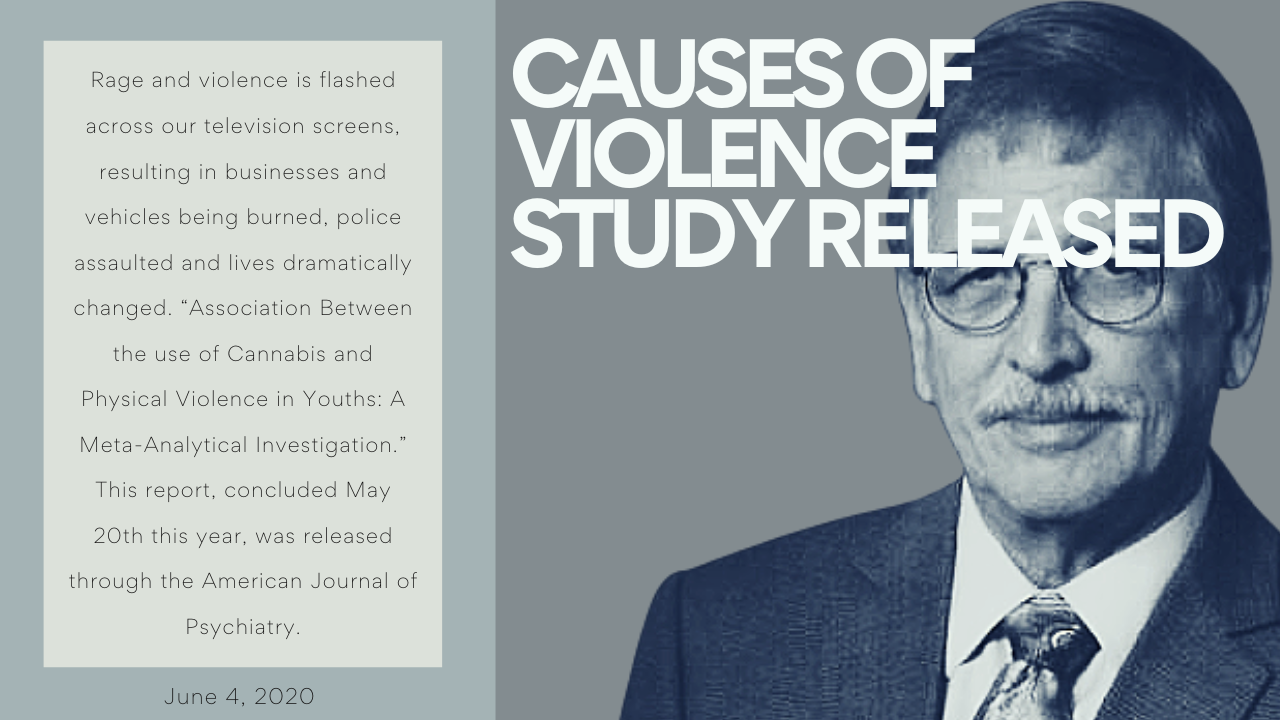Posted on November 16, 2022 View all news
By Joe Tilton
Rage and violence is flashed across our television screens, resulting in businesses and vehicles being burned, police assaulted and lives dramatically changed. For some time, observations in Montcalm County courts have led to observations now scientifically proven in a report called, “Association Between the use of Cannabis and Physical Violence in Youths: A Meta-Analytical Investigation.” This report, concluded May 20th this year, was released through the American Journal of Psychiatry.
Methods for the study are described this way: “All studies that examined both cannabis use and the perpetration of physical violence in a sample of youths and young adults > 30 years old were included. The meta-analysis was performed with a random-effects model. Risk of publication bias was assessed with Egger’s test. Guidelines from the Meta-Analysis of Observational Studies in Epidemiology were followed.” In plain language; this was a thoroughly-vetted process.
In previous articles on marijuana, we have reported no less than 30,000 studies have been accomplished to determine results of cannabis use. This most-recent study screened 11,348 of those studies, resulting in examination of 296,815 adolescents and young adults. Among the results were found, “preliminary evidence suggests that the risk of violence was higher for persistent heavy users compared with past-year users and lifetime users.”
While observations in Montcalm County are not as scientific, other than keeping track of court cases involving violence and marijuana, correlation appears to be the same.
A joke among some local observers suggests a test to determine whether a driver has been using marijuana, is giving the subject a bag of Doritos to see how quickly he tears into them. Now, chips are not needed since more accurate on-site saliva testing has been developed, plus this most-recent study.
Researched conclusions are: a moderate association between cannabis use and physical violence, which remained significant regardless of study design and adjustment for confounding factors (i.e., socioeconomic factors, other substance use). Cannabis use in this population is a risk factor for violence.”
When Montcalm Township was considering approval of marijuana businesses within their borders, anger toward their Board erupted on two occasions by proponents of the plan because votes did not go their way.
An often-used reason for using cannabis is to “enhance quality of life.” If induced delusion is “enhancement” then the drug itself is reason for believing a positive where a negative actually exists. Too, mental degradation resulting from THC, the hallucinogenic component of cannabis, leaves users less capable of processing complicated issues of relationships and basic social interactions–so much for a better “quality of life.”
A critical question arises after awareness this study brings; are the riots and destruction we are seeing in so many cities, evidenced by angry actions by youth, a result in whole or in part from marijuana use? And, how does the rest of society rationalize with delusional thinkers?
One pot user wrote, “In my humble opinion, weed is not a drug; it’s a seasoning…like salt for your life. So, just the same as a person would use salt to enhance a bland soup or what have you, smoking weed can make things more intense and enjoyable…”
“More intense” are operative words. When a user does not get what they want, feelings are intensified and delusional on THC, blocking the ability to think rationally to reach a desired, worthy goal. Is this condition being demonstrated on our streets now? Rioters think they are doing something good. That is delusion.

